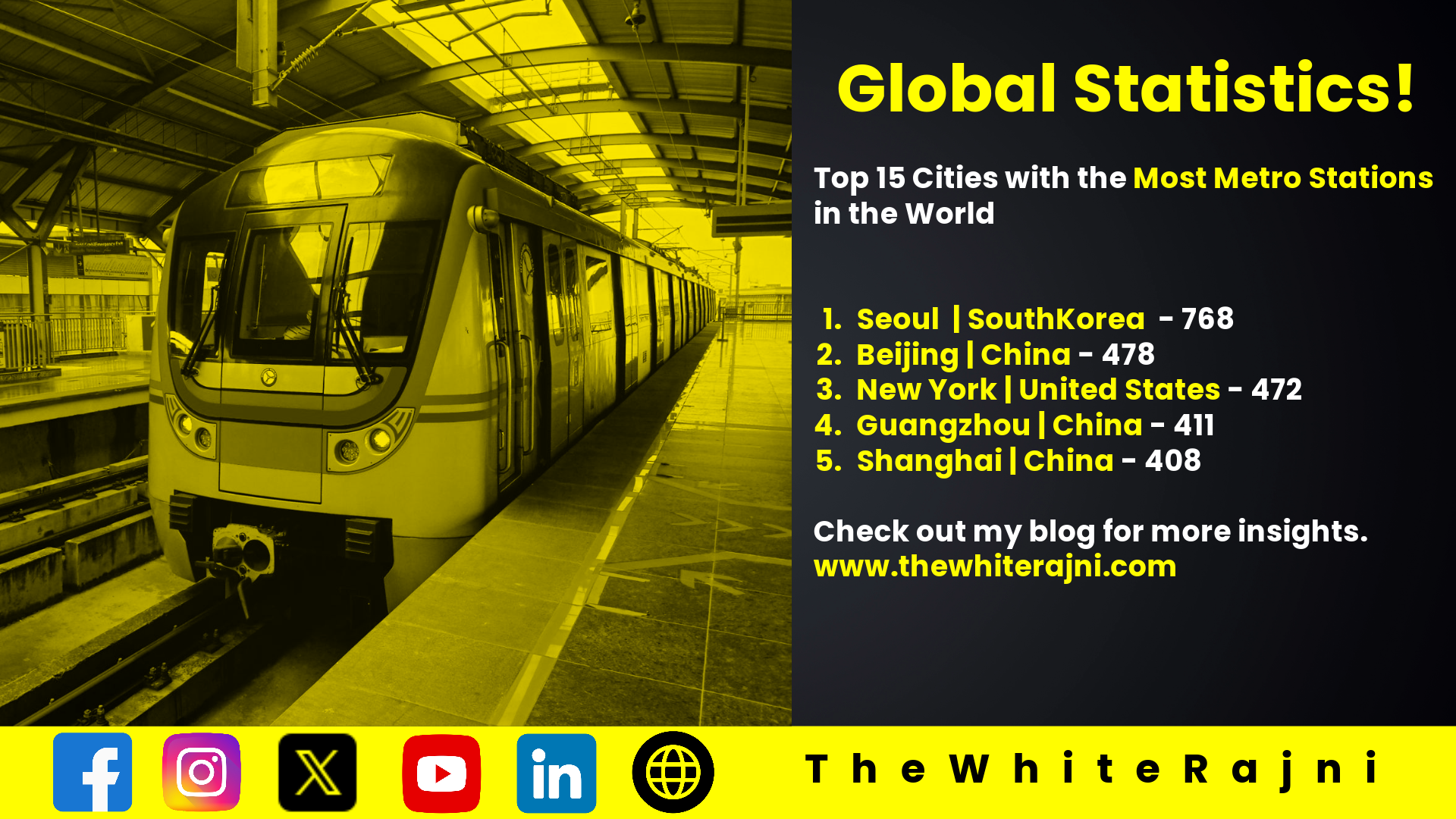Cities around the world rely on efficient transportation systems to keep their residents moving. Metro systems, with their underground or elevated trains, play a significant role in this. Let’s take a look at some of the cities with the most extensive metro networks:
Cities with the Most Metro Stations:
| Rank | City | Country | Number of Metro Stations |
|---|---|---|---|
| 1 | 🇰🇷 Seoul | Korea (South) | 768 |
| 2 | 🇨🇳 Beijing | China | 478 |
| 3 | 🇺🇸 New York | United States | 472 |
| 4 | 🇨🇳 Guangzhou | China | 411 |
| 5 | 🇨🇳 Shanghai | China | 408 |
| 6 | 🇨🇳 Chengdu | China | 373 |
| 7 | 🇨🇳 Shenzhen | China | 369 |
| 8 | 🇫🇷 Paris | France | 308 |
| 9 | 🇷🇺 Moscow | Russia | 300 |
| 10 | 🇨🇳 Wuhan | China | 291 |
| 11 | 🇮🇳 Delhi | India | 287 |
| 12 | 🇨🇳 Chongqing | China | 277 |
| 13 | 🇪🇸 Madrid | Spain | 276 |
| 14 | 🇬🇧 London | United Kingdom | 272 |
| 15 | 🇨🇳 Hangzhou | China | 270 |
These cities have embraced the convenience and efficiency of metro systems, making commuting easier and faster for millions of people. It’s fascinating to see how these networks have evolved and continue to expand, contributing to urban development and sustainable transportation.










